Unlocking India’s E-Commerce Boom: Marketplaces, Social Commerce, and Quick Commerce in 2025
Introduction
India’s e-commerce sector has grown explosively in recent years, reaching tens of billions of dollars in Gross Merchandise Value (GMV) and hundreds of millions of online shoppers . This white paper provides a comprehensive overview of the Indian e-commerce landscape in 2025, focusing on business-to-consumer (B2C) marketplaces (both broad “horizontal” platforms and niche vertical players), a brief look at B2B marketplaces, the rise of social commerce platforms, the emergence of quick commerce, and the API integration capabilities of major platforms. Key statistics and trends are drawn from reputable industry analyses and company reports to ensure accuracy. Clear tables summarize the characteristics of major marketplaces and their API offerings for easy reference.
B2C Marketplaces in India: Horizontal and Vertical Players
Indian online retail is dominated by a few large horizontal marketplaces that sell across categories, complemented by several successful vertical (niche) marketplaces specializing in specific product domains. Table 1 below lists the key B2C marketplaces, their category focus, size and growth metrics, and ownership.
Horizontal Marketplaces: The two giants – Flipkart and Amazon India – account for the majority of online retail. Walmart-owned Flipkart is the market leader with about 48% market share as of FY2023 . Flipkart’s FY2023 GMV was roughly $29 billion , outpacing overall industry growth with a 21% year-on-year user increase . Amazon India is the second-largest player, holding an estimated 30–35% market share with a GMV in the ~$18–20 billion range. Amazon’s user base growth (about 13% YoY) has trailed Flipkart, partly due to Amazon’s focus on more premium, urban customers . Both platforms boast over 100 million registered customers and offer vast product assortments.
Another rising horizontal player is Meesho, originally a social commerce app, which has transformed into a large marketplace targeting “value” shoppers. Meesho’s GMV run-rate exceeded $5 billion in 2023, and it registered 120 million monthly active users with industry-leading 32% user growth . SoftBank and Meta-backed Meesho operates a zero-commission model, selling largely unbranded products to price-conscious buyers in Tier-2 and smaller cities .
Snapdeal, once a top-3 player, has pivoted to a value-focused marketplace (“Snapdeal 2.0”) targeting budget-conscious consumers. It remains among India’s top 5 e-commerce sites , though at a far smaller scale than Flipkart/Amazon. Snapdeal hosts over 500,000 sellers and caters to thousands of towns , but its GMV is now only a few hundred million dollars annually (reflecting its focus on low-priced goods).
Finally, conglomerates have entered the arena: Reliance Industries operates JioMart (groceries and more) and fashion site AJIO, while the Tata Group runs platforms like Tata CLiQ and owns BigBasket. Reliance’s e-commerce ventures (AJIO fashion and JioMart) generated about $5.7 billion in online GMV (2022–23), making Reliance the #3 e-com player by sales . Tata’s BigBasket is India’s leading online grocer (now expanding into quick delivery). These corporate-backed platforms leverage their offline retail networks and financial muscle to challenge the incumbents.
Vertical (Niche) Marketplaces: India also has several category-specific e-tailers that dominate their niches:
-
Myntra (fashion/apparel) – A leading online fashion retailer with over 50% share of active online fashion shoppers . Myntra is owned by Flipkart and reported over 25% growth in app users in late 2023, though its FY2023 GMV growth slowed to 12% (down from 35% in FY2022) . It specializes in branded clothing and lifestyle products.
-
AJIO (fashion) – Reliance’s fashion marketplace growing rapidly, now capturing ~30% of monthly active user share in online fashion . AJIO lists both Reliance’s private labels and third-party brands, leveraging Reliance Retail’s inventory.
-
Nykaa (beauty and cosmetics, now also fashion) – A vertical market leader in beauty and personal care e-commerce. Nykaa has a user base of millions of beauty shoppers and faced relatively limited direct competition in its core segment . It went public in 2021 (FSN E‑Commerce Ventures) and had net revenue of ₹5,142 Cr in FY2023 (around $630 M) with continued growth . Nykaa’s strength lies in its curated assortment of cosmetics and grooming products and a content-driven approach.
-
FirstCry (baby/kids products) – The top e-commerce site for maternity, baby, and kids’ goods. FirstCry, backed by SoftBank, serves over 10 million registered users through online and a network of physical franchise stores. It has an estimated valuation over $2 billion and is a go-to for infant care products in India.
-
BigBasket (online grocery) – Though structured more as an online supermarket than a marketplace, BigBasket is India’s largest online grocery service, now majority-owned by Tata. It operates in 30+ cities, offering tens of thousands of products. BigBasket’s annual GMV crossed $1 billion and it turned EBITDA-positive post acquisition by Tata Digital. It pioneered the grocery delivery segment and continues to dominate scheduled grocery deliveries.
-
Pepperfry (furniture and home décor) – A leading vertical marketplace for furniture, hosting thousands of small merchants and its own private label furniture. Pepperfry’s GMV was reportedly around $250 M in 2022, and it filed for an IPO (currently on hold). It offers an omnichannel experience with experience centers but primarily sells online, capturing a large share of online furniture retail in India.
-
Other notable vertical players include Lenskart (eyewear, omnichannel), Cars24 (used cars marketplace), Netmeds/PharmEasy (online pharmacies), and Purplle (online beauty store). These serve specific categories, but for brevity, we focus on the major ones above.
Ownership and Corporate Structures: Table 1 summarizes the ownership of each platform. Notably, Flipkart and Myntra are part of the Walmart-controlled Flipkart Group, while Amazon India is a subsidiary of Amazon.com, Inc. Meesho is a privately held startup (backed by SoftBank, Meta, etc.). Snapdeal is private (major early investors included SoftBank and Alibaba; it’s now founder-led after a failed merger with Flipkart in 2017). Reliance Retail owns AJIO and JioMart (Reliance Retail itself is a unit of Reliance Industries, with minority stakes held by foreign investors). Nykaa is a publicly listed Indian company (founder-led, with Falguni Nayar’s family holding a majority stake). Tata owns BigBasket (via Tata Digital) and operates Tata CLiQ and Croma’s online store. Most vertical specialists (FirstCry, Pepperfry, etc.) are private ventures with venture capital/private equity ownership.
Table 1. Key B2C Marketplaces in India – Platforms, Size, Growth, and Ownership
|
Marketplace |
Category Focus |
Scale and Growth Metrics |
Ownership / Corporate Group |
|---|---|---|---|
|
Flipkart |
Horizontal (all categories) |
~48% of e-retail market share ; ~$29 B GMV FY2023 ; user base +21% YoY . Dominant in smartphones (~48% share) and fashion (~60% share) . |
Flipkart Pvt Ltd (Singapore) – ~77% owned by Walmart, remainder by investors (Tencent, etc.). Owns Myntra, PhonePe. |
|
Amazon India |
Horizontal (all categories) |
~30–35% e-retail market share; ~$18–20 B GMV . ~100 million+ customers; user base growth ~13% YoY . Leading in product selection and Prime loyalty program. |
Amazon.com, Inc. (US) – Indian subsidiary (Amazon Seller Services, etc.) fully owned by Amazon (NASDAQ: AMZN). |
|
Meesho |
Horizontal (value-focused) |
120 million MAUs; GMV > $5 B run-rate . Fastest-growing (user +32% YoY) , with order volume +43% YoY . Focus on unbranded low-cost goods (95% of listings) , huge Tier-2/3 penetration. |
Private company (FSN E-Commerce). Founded 2015. Key investors: SoftBank, Meta (Facebook), Prosus, Sequoia. Headquarters in Bengaluru. |
|
Snapdeal |
Horizontal (value-focused) |
Once #3 player; now much smaller (~$0.1–0.2 B GMV in 2024 ). Focuses on “value” segment 3× larger than branded goods market . 500k+ sellers, products mainly in fashion, home, general merchandise . Serves 3,700+ towns . |
Private (Jasper Infotech). Founded 2010. Major investors: SoftBank, Nexus Venture, Alibaba (earlier). Founders Kunal Bahl and Rohit Bansal lead “Snapdeal 2.0” pivot. |
|
Myntra |
Vertical – Fashion |
~50% share of active online fashion users ; ~12% GMV growth in FY2023 (slower post-pandemic) . 50+ million app downloads. Strong in apparel, beauty (via Myntra Beauty). Known for “End of Reason Sale” events. |
Part of Flipkart Group (acquired 2014). Operates independently under Flipkart’s ownership (Walmart-controlled). Headquartered in Bengaluru. |
|
AJIO |
Vertical – Fashion |
Rapid growth in fashion segment – ~30% share by user reach (MAUs) . Benefited from Reliance’s brands and offline stores. Competes closely with Myntra on catalog size. Exact GMV not disclosed (part of Reliance’s $5.7B e-com) . |
Reliance Retail (Reliance Industries Ltd). Launched 2016. Integrated with Reliance’s offline fashion (Trends) and digital ecosystem (Jio). |
|
Nykaa |
Vertical – Beauty (and Fashion) |
21+ million monthly visits (approx); FY2023 net revenue ₹5,142 Cr (~$630 M). Grew quickly post-2015, IPO in 2021. Commands ~30–40% of online beauty market. Nykaa Fashion (launched 2018) expanding in apparel. |
FSN E-Commerce Ventures Ltd. (public company listed on NSE/BSE). Founded by Falguni Nayar, who along with family owns ~52%. Based in Mumbai. |
|
FirstCry |
Vertical – Baby/Kids |
Over 10 million customers; estimated ~$700 M GMV (including offline). Dominant in infant products (market share ~70% online). Operating 500+ FirstCry stores as omni-channel. Achieved unicorn valuation. |
BrainBees Solutions Pvt Ltd. (private). Major investors: SoftBank, PremjiInvest, etc. Considering IPO. Pune-based, founded 2010. |
|
BigBasket |
Vertical – Grocery |
India’s #1 online grocery platform. Serves 7+ million customers; presence in 30 cities. FY2022 GMV ~₹7,000 Cr ($1 B). Turned operationally profitable. Launched quick-delivery service “BB Now”. |
Supermarket Grocery Supplies Pvt Ltd. Majority owned by Tata Digital (acquired ~60% in 2021). Originally founded 2011 in Bengaluru. |
|
Pepperfry |
Vertical – Furniture |
Leading online furniture marketplace (50%+ online furniture share). Over 6 million registered users. FY2022 GMV ~₹1,700 Cr ($230 M). Runs 100+ experience studios for omnichannel support. Filed for IPO in 2022. |
Pepperfry Pvt. Ltd. (private). Founded 2012 by ex-eBay India execs. Key investors: Norwest Venture, Goldman Sachs, etc. Based in Mumbai. |
Sources: Market share and GMV figures from AllianceBernstein (via media reports) ; user metrics and growth from company disclosures and news reports . Nykaa revenue from company financial reports .
B2B Marketplaces: A Brief Overview
In addition to consumer retail, India has a thriving e-commerce segment focused on business-to-business (B2B) trade. These platforms enable wholesalers, manufacturers, and small retailers to transact online. While a deep dive is beyond scope, key B2B marketplaces include:
-
IndiaMART: India’s largest online B2B marketplace (publicly listed). It connects 8+ million suppliers with over 200 million buyers across industrial and consumer categories . IndiaMART largely operates as a directory and lead-generation platform – buyers make inquiries and connect with suppliers – rather than handling payments/logistics. It had ~60% share of the online B2B classifieds market as of 2019 .
-
Udaan: A startup unicorn (founded 2016) that is a wholesale marketplace for retailers, covering categories like FMCG groceries, apparel, electronics, etc. Udaan enables small kirana (corner store) owners and businesses to procure inventory online with doorstep delivery and credit. It grew rapidly to serve thousands of towns, raising over $1 billion in funding. Udaan is often cited as a leader in transforming India’s traditional distribution via e-commerce .
-
Reliance JioMart Partner (B2B): Reliance Retail leverages its network to supply small stores through its JioMart Partner app. Alongside Udaan, JioMart’s B2B arm is considered a leading e-B2B player, especially in grocery supply. Industry reports expect India’s B2B e-commerce GMV to reach $90–100 B by 2030, led by platforms like Udaan and JioMart . Reliance’s acquisition of Metro Cash & Carry India and its wholesale partnerships bolster this effort.
-
Government e-Marketplace (GeM): An important B2G/B2B platform, GeM is a procurement portal for government departments to buy goods and services from private vendors. GeM has grown exponentially – by FY2023 it reportedly surpassed ₹1 lakh crore ($12+ B) in annual GMV, making it one of the largest e-commerce platforms by value. While not a private enterprise, GeM’s success reflects the digitization of B2B/government trade.
-
Others: Niche B2B platforms are emerging for specialized needs – e.g. Moglix (industrial supplies marketplace, backed by Ratan Tata and others), OfBusiness (procurement and financing for SME raw materials), Industrybuying (industrial goods), and ShopX / ElasticRun (which help supply kirana stores). These contribute to the fast-growing e-B2B ecosystem addressing inefficiencies in traditional supply chains. The overall eB2B channel is helping retailers obtain better pricing, credit, and product range, and is expected to capture an increasing share of India’s $1+ trillion B2B trade by 2030 .
In summary, B2B e-commerce in India is on a high-growth trajectory, complementing the consumer-facing e-commerce boom. Large platforms (Udaan, JioMart Partner, IndiaMART) and a host of vertical solutions are bringing India’s millions of small businesses into the digital procurement fold.
The Rise of Social Commerce in India
Social commerce – the intersection of social media and online shopping – has become a significant phenomenon in India. It encompasses peer-to-peer selling, community group buying, influencer-driven commerce, and reseller networks, often leveraging platforms like WhatsApp, Facebook, and Instagram. India’s internet users, especially in smaller cities, have embraced social commerce as an accessible way to shop online through recommendations and trust-based networks.
Key emerging social commerce platforms and trends include:
-
Meesho: The poster child of Indian social commerce. Meesho started as a reseller platform enabling individuals (often housewives and micro-entrepreneurs) to sell products on WhatsApp and Facebook. By 2020, it had millions of “social sellers.” Meesho has since transitioned to a direct B2C model, but its early growth was fueled by social sharing. With a zero-commission approach and focus on unbranded, affordable products, Meesho tapped into a vast new customer base. Its app downloads and usage surged in Tier-2/3 cities . Meesho’s success (120 M MAUs, $5B+ GMV) demonstrates the potential of social-driven commerce .
-
Shopsy (Flipkart): To counter Meesho, Flipkart launched Shopsy in 2021 as a social commerce app. Initially, Shopsy allowed users to share product listings with their contacts and earn commissions on any purchases (a reseller model). It quickly gained traction – crossing 100 million users in 2022 and delivering orders to 16 million customers in Q1 2023 . Over 70% of Shopsy’s users are from small cities (Tier II/III) . While it began as a social sharing platform, Shopsy has increasingly focused on direct low-price shopping. It offers 150 million products (with 60% of items under ₹200) to attract price-sensitive buyers . Shopsy contributed a large share of Flipkart’s new customer growth (40% of first-time Flipkart-group shoppers) .
-
GlowRoad and others: Amazon India made a foray into social commerce by acquiring GlowRoad (a women-focused reseller network) in 2022 . GlowRoad enabled individuals to curate product catalogs and sell within their social circles. Similarly, startups like Shop101 and CityMall targeted social selling (Shop101 was acquired by InMobi; CityMall, which focused on group-buying in small towns, was backed by Accel but faced challenges and was eventually acqui-hired). Trell and Trell Shop attempted a mix of influencer-driven content and commerce for beauty products. SimSim, a video-led commerce app, was acquired by YouTube (Google) in 2021 to integrate social shopping into YouTube – though YouTube India later shut down SimSim’s standalone operations by 2023 . These moves underscore how major players recognized the social commerce opportunity.
-
DealShare: Another notable model is DealShare, which started as a group-buying platform for groceries and essentials. It encourages customers to team up with friends/family to buy in bulk at discounted rates – a model inspired by China’s Pinduoduo. DealShare found success in tier-2 cities, reportedly reaching a $600M annual revenue run-rate and attaining unicorn valuation. It blends social virality (via WhatsApp sharing) with a focus on super-affordable daily needs.
-
Influencer and Video Commerce: There’s a growing trend of influencers and live-streaming driving e-commerce (so-called video commerce). Platforms like Roposo (owned by Glance) and startups like BulbulTV tried live shopping shows for fashion/beauty, where hosts demonstrate products that viewers can buy in-app. While still nascent, this format aligns with India’s huge social media consumption. A RedSeer report projected that social and video-led commerce could become a $250 B market opportunity by 2030 for digital-first brands . Instagram and YouTube themselves are integrating shopping features to capitalize on this.
Overall, social commerce in India is characterized by: (a) strong adoption in non-metro cities where trust in traditional e-commerce was initially low, but buying via recommendations from a known person feels safer; (b) an emphasis on low-price, unbranded goods that appeal to mass-market consumers; (c) the empowerment of micro-entrepreneurs (resellers) who earn by sharing deals; and (d) innovative use of social networks and content to engage buyers. By blending trust, virality, and convenience, social commerce has onboarded a new segment of consumers to e-commerce. It continues to evolve, with major e-tailers now incorporating social features (e.g., live chats, community buying options) into their platforms.
Quick Commerce in India: Instant Delivery Revolution
One of the most exciting developments in the Indian e-commerce ecosystem is the advent of Quick Commerce (Q-commerce) – the ability to deliver goods (primarily groceries and essentials) to customers in under 60 minutes, often as fast as 10–20 minutes. Quick commerce services rely on hyperlocal “dark stores” or retail hubs and a fleet of delivery riders to fulfill orders almost instantly. This segment emerged around 2020–2021 and saw breakneck growth, as urban consumers embraced the convenience of near-instant delivery for daily needs.
Definition and Scope: Quick commerce refers to super-fast delivery of products (typically a limited assortment of grocery, convenience, and pharmacy items) soon after an order is placed, as opposed to traditional next-day or 2-day e-commerce deliveries. These platforms usually stock a curated selection of a few thousand high-demand items in small warehouses within neighborhoods, enabling very short fulfillment times. Orders are placed via an app and delivered by bike riders to the customer’s doorstep in a matter of minutes. Examples of items include fresh fruits and vegetables, dairy, snacks, beverages, over-the-counter medicines, and personal care items – essentially, anything one might need from a local corner store, provided on-demand.
Leading Players: Quick commerce in India is currently dominated by three players (Table 2 summarizes their market positions ):
-
Blinkit: Formerly known as Grofers, Blinkit pivoted from next-day grocery to instant delivery in 2021. It operates in multiple major cities with hundreds of dark stores. Blinkit’s fast expansion and efficient operations made it the market leader with ~40% share of India’s quick commerce GMV . In mid-2022, Zomato (the food delivery giant) acquired Blinkit, signaling consolidation. Blinkit leverages Zomato’s logistics expertise and customer base; by late 2023 it was the top player, reportedly handling >100,000 orders per day and expanding into new categories like stationery and electronics accessories for instant needs.
-
Swiggy Instamart: Swiggy, India’s leading food delivery app, launched Instamart in 2020 as an on-demand grocery service within its app. Backed by Swiggy’s deep logistics network, Instamart quickly grew and now holds about 37–39% of quick commerce GMV . It operates in dozens of cities. Swiggy has invested heavily (including raising funds specifically for Instamart) to compete head-to-head with Blinkit. Instamart’s strength is its integration in the popular Swiggy app and Swiggy One membership benefits.
-
Zepto: A startup founded in 2021 by two 19-year-old entrepreneurs, Zepto popularized the 10-minute grocery delivery model in Indian metros. Zepto carved out ~20% market share by GMV , focusing on affluent neighborhoods in cities like Mumbai, Delhi, and Bengaluru. It differentiated via extremely fast service and a tech-driven approach to inventory and rider routing. By 2023, Zepto raised substantial venture capital (reaching unicorn valuation) and expanded to over 10 cities, though it faces the challenge of achieving profitability.
-
Dunzo (and others): Dunzo, originally a hyperlocal delivery app (for errands), also entered the quick commerce fray with Dunzo Daily in Bengaluru and a few cities. Dunzo is partly owned by Reliance Retail (which took a ~25% stake) and Google. It offered 15-20 minute delivery from mini-warehouses. However, in 2023 Dunzo faced funding hurdles and scaled back some operations, ceding ground to the top three. BigBasket launched “BB Now” for 15-minute delivery in select zones, and Amazon India experimented with <2-hour deliveries via “Amazon Fresh” and “Instant” pick-up points. Traditional grocery retailers like Reliance’s JioMart are also moving towards faster fulfillment (e.g., 2-hour slots), but strictly <1-hour “quick commerce” is mainly driven by the specialists above.
Market Size and Trends: Quick commerce saw triple-digit growth during 2021–2022, fueled by pandemic-driven demand for home delivery and massive VC investments. By 2023, India’s quick commerce market was valued around $3.3 billion and accounted for an estimated 8% of overall e-commerce during festive 2024 sales (up from 5% the year prior) . The sector is expected to continue robust growth (RedSeer predicts quick commerce sales could nearly $5 B in a few years), but companies are now increasingly focusing on unit economics and sustainability. A few notable trends:
-
Consolidation and Competition: The competitive landscape stabilized into a “three-player structure” , as noted: Blinkit, Instamart, Zepto. Blinkit’s acquisition by Zomato and Reliance’s backing of Dunzo indicate larger ecosystem plays (food delivery and retail conglomerates integrating quick commerce). Smaller startups (e.g., Grofers’ early rival “Milkbasket”) were acquired or pivoted. This consolidation mirrors food delivery, where 2–3 players typically survive intense competition.
-
Geographic Concentration: Quick commerce is most viable in dense urban areas. Initially focused on top metro cities, these services are now penetrating second-tier cities as well. However, the economics tend to work best in high population density neighborhoods where daily order frequency is high. Companies are expanding cautiously to ensure each micro-market has enough volume.
-
Assortment Expansion: While groceries remain the core, quick commerce platforms have expanded into new assortments like beauty products, small electronics, and home essentials . Consumers are getting used to the idea of instant needs beyond food – e.g., a phone charger, OTC medicines, or a cosmetics item delivered in minutes. This diversification helps increase average order values and repeat usage.
-
Operational Efficiency and Profit Focus: The initial phase saw heavy discounting and delivery fee waivers to acquire customers. In 2023, as funding moderated, players cut cash burn – introducing modest delivery fees, raising order minimums, and optimizing dark store locations. There is an increased push to improve unit economics (batching orders, increasing pick efficiency, etc.). Blinkit, for instance, reportedly achieved contribution margin positivity in mature clusters , and Zepto aims to breakeven by 2024. The long-term viability of quick commerce will depend on such efficiency gains.
-
Consumer Adoption: Indian consumers have shown a clear appetite for hyper-fast delivery when it is affordable. Use cases like last-minute cooking ingredients, emergency grocery stock-up, or late-night snacks have driven usage. A survey by Redseer found a majority of e-grocery shoppers appreciate quick delivery for the convenience, though they still use traditional e-grocery for larger planned orders. The behavior seems to be incremental – quick commerce adds spontaneous “top-up” purchases in between regular shopping cycles. As a result, rather than cannibalizing standard e-grocery, it has expanded the overall pie.
Quick commerce is now a distinct pillar of India’s e-commerce story. It blends elements of food-tech (on-demand delivery) with retail (stocking inventory), creating a new paradigm of service. The next few years will reveal if these companies can turn their rapid growth into sustainable business models. If they do, instant delivery could well become a standard expectation for urban Indian consumers.
Table 2. Leading Quick Commerce Platforms – Market Share and Key Details
|
Platform |
Approx. Market Share (GMV) |
Ownership/Parent |
Key Notes (2024) |
|---|---|---|---|
|
Blinkit (formerly Grofers) |
~40% |
Zomato Ltd (acquired 2022) |
15–20 min deliveries; 500+ dark stores; leader in Delhi-NCR and Tier-1 cities. Originally a next-day grocer, pivoted to quick commerce in 2021. Integrated with Zomato’s food app for cross-service synergies. |
|
Swiggy Instamart |
~37–39% |
Bundl Technologies (Swiggy) |
Built on Swiggy’s food delivery network. Offers 30-min avg delivery in 25+ cities. Wide assortment (~3,000 items) with Swiggy One benefits. Focus on profitability in 2024 after explosive 2021–22 growth. |
|
Zepto |
~20% |
Zepto (Private startup) |
10-minute delivery model in major metros. Youngest player (founded 2021) but reached unicorn valuation. High customer ratings for speed. Scaling back discounts to improve margins. |
|
Dunzo Daily |
(N/A – smaller scale) |
Dunzo (Reliance Retail ~25% stake) |
15-20 min deliveries in select cities (especially Bengaluru). Faced funding issues in 2023, downsized operations. Now focusing on B2B deliveries for Reliance alongside limited B2C quick commerce. |
Sources: AllianceBernstein via Times of India ; Economic Times ; company announcements.
Overall, the Indian e-commerce landscape in 2025 is diverse and dynamic – dominated by a few horizontally integrated giants, enriched by specialized vertical leaders, transformed by social commerce innovations, and accelerated by quick commerce services. For any company or developer engaging with this landscape, understanding the major players and tapping into their APIs will be key to unlocking the full potential of India’s digital commerce revolution.


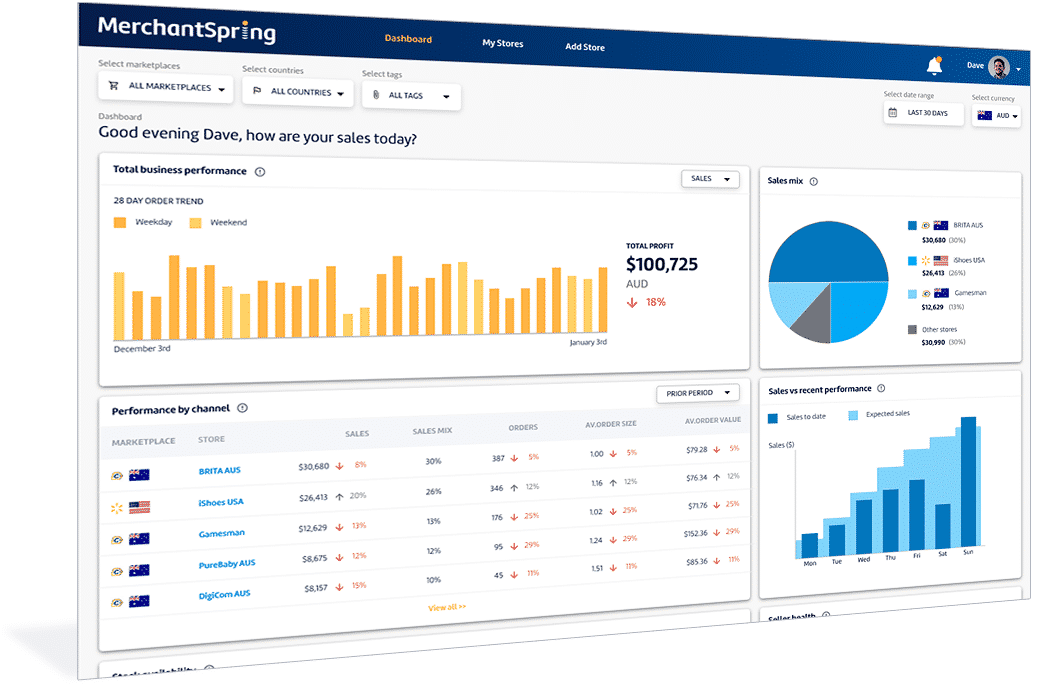
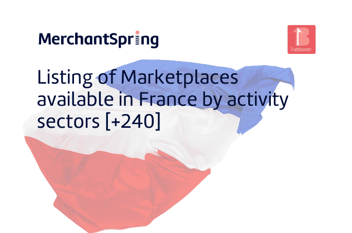
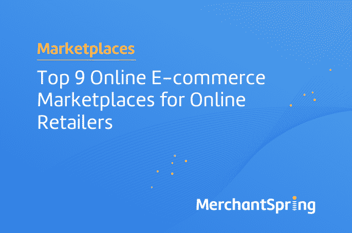
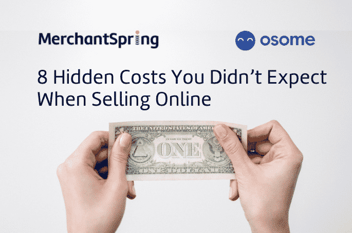

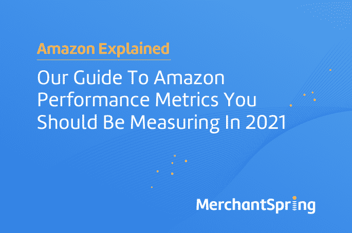
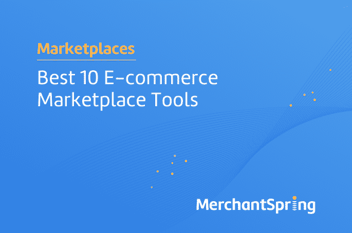

Add a Comment